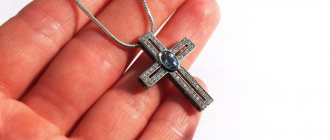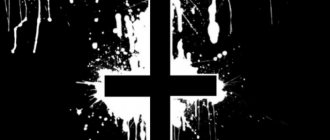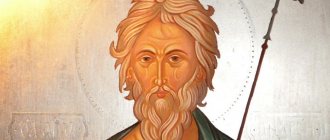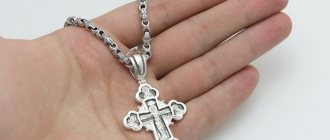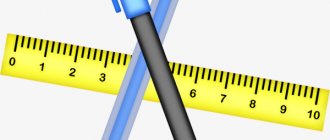"Save me, God!".
Thank you for visiting our website, before you start studying the information, please subscribe to our Orthodox community on Instagram, Lord, Save and Preserve † - https://www.instagram.com/spasi.gospodi/. The community has more than 60,000 subscribers. There are many of us like-minded people and we are growing quickly, we post prayers, sayings of saints, prayer requests, and timely post useful information about holidays and Orthodox events... Subscribe. Guardian Angel to you!
Just as there are a large number of different religions, there are also a variety of symbols of such faith. The most widespread is Christianity. Regardless of whether believers belong to Orthodoxy or Catholicism, representatives of both of these branches honor and wear crosses. There is a certain difference between the Orthodox and Catholic crosses, which you need to know in order not to get into an unpleasant situation.
Cross shape
For Orthodoxy, the shape of the cross is not particularly important; much more attention is paid to what is depicted on it, however, eight-pointed and six-pointed crosses have gained the most popularity.
Since ancient times, the eight-pointed cross has been considered the most powerful protective tool against various kinds of evil spirits, as well as visible and invisible evil. Its eight ends are a reflection of eight periods of human history, the eighth being the Kingdom of Heaven. The upper crossbar of the cross, distinguished by its small size, symbolizes the tablet that was nailed over convicts in ancient times with explanations of their crimes. The oblique crossbar at the bottom of the cross has two meanings. Firstly, this is a footstool, similar to the one that was present at the crucifixion. The second meaning of this crossbar is more symbolic. It means an imbalance in the sinful world, and indicates the path of rebirth and movement towards heavenly light.
The six-pointed cross was widespread among Orthodox believers, especially during the times of Ancient Rus'. It also has an inclined crossbar, but the meaning is somewhat different. The lower end symbolizes unrepentant sin, and the upper end symbolizes liberation through repentance.
The Catholic Church uses only one image of the cross - a simple, quadrangular one with an elongation of the lower part.
However, all its strength does not lie in the shape of the cross or the number of ends. The cross is famous for the power of Christ crucified on it, and this is all its symbolism and miraculousness.
History of Catholicism
As a separate movement of Christianity, it separated back in 1054. This happened after the “Great Schism,” when the Pope and the Patriarch anathematized each other. The followers also divided into two “camps” and since then, Catholicism has been considered a separate religious movement.
Like the Orthodox, they have their own symbols and attributes that symbolize their faith. Catholicism is considered one of the most widespread religions on the planet. In Europe, most countries are controlled and the church has the strongest influence on people's lives. For example, Poland, Belgium, Italy and others. The American continent has the largest number of Catholics.
The position of Jesus' body on the cross
If the shape of the cross most often does not matter for believers and servants of the Lord, then the position of the body of Jesus is a fundamental disagreement between these two religions.
In the Catholic Crucifixion, the image of Christ has naturalistic features. It reveals all human suffering, the torment that Jesus had to experience. His arms sag under the weight of his body, blood streams down his face and from wounds on his arms and legs. The image of Christ on the Catholic cross is plausible, but it is an image of a dead man, while there is no hint of the triumph of victory over death.
The crucifixion in Orthodoxy symbolizes this triumph. It contains humility and joy of resurrection. Jesus' palms are open, as if he wants to embrace all humanity, giving them his love and opening the way to eternal life. He is God, and his whole image speaks of this.
The meaning of the cross in Christianity
This symbol has long been revered by Orthodox and Catholics as a symbol of Christ's victory of good over evil, as well as a symbol of hope for eternal life. A person receives a cross as a sign of his membership in the Church. At baptism, a person renounces Satan and recognizes the full power of the Lord over himself. This item also symbolizes strong protection and protection from dark forces.
Knowledge of such subtleties will help you accurately identify the Orthodox or Catholic cross in front of you. But if a mistake did occur or you deliberately bought a cross you liked, then do not rush to hide it or get rid of it. Approach the priest and ask him to bless you. Perhaps they will meet you and he will accompany you for a long time.
The best article for you, go to: Maslenitsa is a holiday of the Russian people
The Lord is always with you!
Inscriptions on the cross
The inscription on the tablet attached above the head of Jesus, where there should have been a description of his offense, is also different. But since Pontius Pilate did not find how to describe the guilt of Christ, the words “Jesus of Nazareth, King of the Jews” appeared on the tablet in three languages: Greek, Latin and Aramaic.
And the only difference in the image of this inscription on the cross is that this inscription (one and the same) is written in Latin in Catholicism and has the form INRI, and in Orthodoxy - IHHI.
| Catholic cross |
|
Difference between Catholic and Orthodox cross symbol
Their main difference lies in the image and inscriptions. Having carefully studied them, one can say with almost complete certainty which movement of Christianity this subject belongs to.
Inscriptions
You can determine the ownership of an item by the inscription at its top. In the Latin version, the abbreviation for the words “Jesus of Nazareth, King of the Jews” is “INRI”. There can be two types of inscriptions on an Eastern Christian cross: IHHI or IHCI. In addition to this abbreviated inscription, it contains the following letters:
- IC XC - Jesus Christ;
- TS - King of Glory;
- NK - NIKA, which means winner.
Only the Orthodox Christian symbol has the inscription “Save and Preserve” on the reverse side.
Image
The greatest differences are observed in the depiction of the figure of the Savior. The Orthodox image depicts the Son of God conquering death. His arms are calmly spread to the sides with open palms. It seems that Jesus embraces all people. The head is surrounded by a halo and the eyes are open. The legs stand on the crossbar, or nail one at a time to the vertical part.
Read about Christ:
- Suffering on the Cross of Jesus Christ
- Death of Jesus Christ
- Resurrection of Jesus Christ
Most often, Catholics depict the cross as four-pointed.
The Catholic depiction of Christ is more realistic. The figure literally hangs on a cross-shaped structure, nailed to it with three nails. A crown of thorns is put on his head, from under which blood flows onto his face. Wounds are also visible on other parts of the body. The eyes on his drooping head are always closed.
You should know that the crucifix of Eastern Christians is flat, while for Catholics it protrudes above the surface.
Conclusions TheDifference.ru
- The Orthodox cross most often has an eight-pointed or six-pointed shape. The Catholic cross is four-pointed.
- The words on the sign on the crosses are the same, only written in different languages: Latin (in the case of a Catholic cross) and Slavic-Russian (on an Orthodox cross).
- The feet of Jesus Christ are placed together on a Catholic Crucifix, and each is nailed separately on an Orthodox cross.
- The Orthodox cross depicts God, who opened the path to eternal life, while the Catholic cross depicts a man experiencing torment.
Rules of construction: proportions and sizes
Classic version of the eight-pointed crosshair
is built in the correct harmonious proportion, which consists in the fact that everything embodied by the Creator is perfect. The construction is based on the law of the golden ratio, which is based on the perfection of the human body and sounds like this: the result of dividing the height of a person by the distance from the navel to the feet is 1.618, and coincides with the result obtained from dividing the height by the distance from the navel to the top of the head. A similar ratio of proportions is contained in many things, including the Christian cross, the photo of which is an example of construction according to the law of the golden ratio.
The drawn crucifix fits into a rectangle, its sides are adjusted to the rules of the golden ratio - the height divided by the width equals 1.618. Another feature is that the span of a person’s arms is equal to his height, so a figure with outstretched arms is harmoniously contained in a square. Thus, the size of the middle intersection corresponds to the span of the Savior’s arms and is equal to the distance from the crossbar to the beveled foot and is characteristic of the height of Christ. Anyone planning to write a cross or apply a vector pattern should take these rules into account.
Pectoral crosses in Orthodoxy
are considered to be those worn under clothing, closer to the body. It is not recommended to display the symbol of faith in public by wearing it over clothing. Church products have an eight-pointed shape. But there are crosses without upper and lower crossbars - four-pointed ones, and these are also allowed to be worn.
The canonical version looks like eight-pointed products with or without an image of the Savior in the center. The custom of wearing church crosses made of various materials on the chest arose in the first half of the 4th century. Initially, it was customary for followers of the Christian faith to wear not crosses, but medallions with the image of the Lord.
During periods of persecution from the middle of the 1st to the beginning of the 4th century, there were martyrs who expressed a desire to suffer for Christ and applied crosshairs to their foreheads. Using their distinctive sign, volunteers were quickly identified and martyred. The emergence of the Christian religion introduced the custom of wearing crucifixes, and at the same time they were installed on the roofs of churches.
The variety of forms and types of the cross does not contradict the Christian religion. It is believed that every manifestation of the symbol is a true cross, carrying life-giving power and heavenly beauty. To understand what Orthodox crosses are, types and meaning
, let's look at the main types of design:
In Orthodoxy, the greatest importance is given not so much to the form as to the image on the product. Six-pointed and eight-pointed figures are more common.
Novgorod
Orthodox cross, in the image of which there is a circle. sometimes it is considered one of the varieties of the Templar cross. The symbol was widespread in the Novgorod land, which is why it got its name.
One of the most famous stone Novgorod crosses was erected in memory of the Battle of Kulikovo by Archbishop Alexy of Novgorod, who lived in the 14th century. Therefore, it is also called Alekseevsky.
Old Believer
An eight-pointed cross located inside a four-pointed one. The key feature is the absence of a crucifix: only the shape of the symbol is important. Short crossbars are depicted in the same way as in Orthodoxy.
Orthodox cross: a little history
The cross as a symbol is used in many world beliefs. But for Christians it initially did not have a very good meaning. Thus, the guilty Jews were executed first in three ways, and then a fourth was added. But Jesus managed to change this order for the better. And he was crucified on a pillar with a crossbar, reminiscent of a modern cross.
Thus, the sacred sign firmly entered the life of Christians. And it became a real protective symbol. In Rus', a person with a cross around his neck inspired trust, and they tried not to do any business with those who did not wear a cross. And they said about them: “There is no cross on them,” meaning a lack of conscience.
We can see crosses of various formats on the domes of churches, on icons, on church paraphernalia and as decorations on believers. Modern Orthodox crosses, the types and meanings of which can vary, play an important role in the transmission of Orthodoxy throughout the world.
Christian crosses: main types and differences between them
The cross is a very ancient symbol that carries a sacred meaning in many beliefs. Researchers count dozens of varieties of its image. It is not surprising that a person who decides to purchase a gold or silver pectoral cross is often confused in this variety.
Representatives of the Orthodox Church, as a rule, treat this phenomenon calmly. The Byzantine monk, Venerable Theodore the Studite, said that “a cross of any form is the true cross.” It is not the external form that is important, but the meaning that a person puts into this symbol. Still, it is useful to understand the differences between them from a cultural perspective.
Signs and superstitions associated with the pectoral cross
The cross is given to a person during baptism. After this sacrament, the church decoration must be worn almost without taking off. Some believers even wash themselves wearing their crosses for fear of losing them. But what does it mean when the cross is lost?
Many Orthodox people believe that the loss of a cross is a sign of impending disaster. To ward it off, Orthodox Christians fervently pray, confess and receive communion, and then acquire a new consecrated cross in the church.
Another sign is related to the fact that you cannot wear someone else’s cross. God gives each person his own burden (cross, trials), and by putting on someone else’s badge of faith, a person takes on someone else’s difficulties and fate.
Today, family members also try not to wear each other’s crosses. Although previously, a cross decorated with precious stones was passed down from generation to generation and could become a real family heirloom.
A cross found on the road is not raised. But if they pick it up, they try to take it to church. There it is consecrated and purified again, and given to those in need.
Many priests call all of the above superstitions. In their opinion, anyone can wear a cross, but you need to make sure that it is consecrated in the church.
